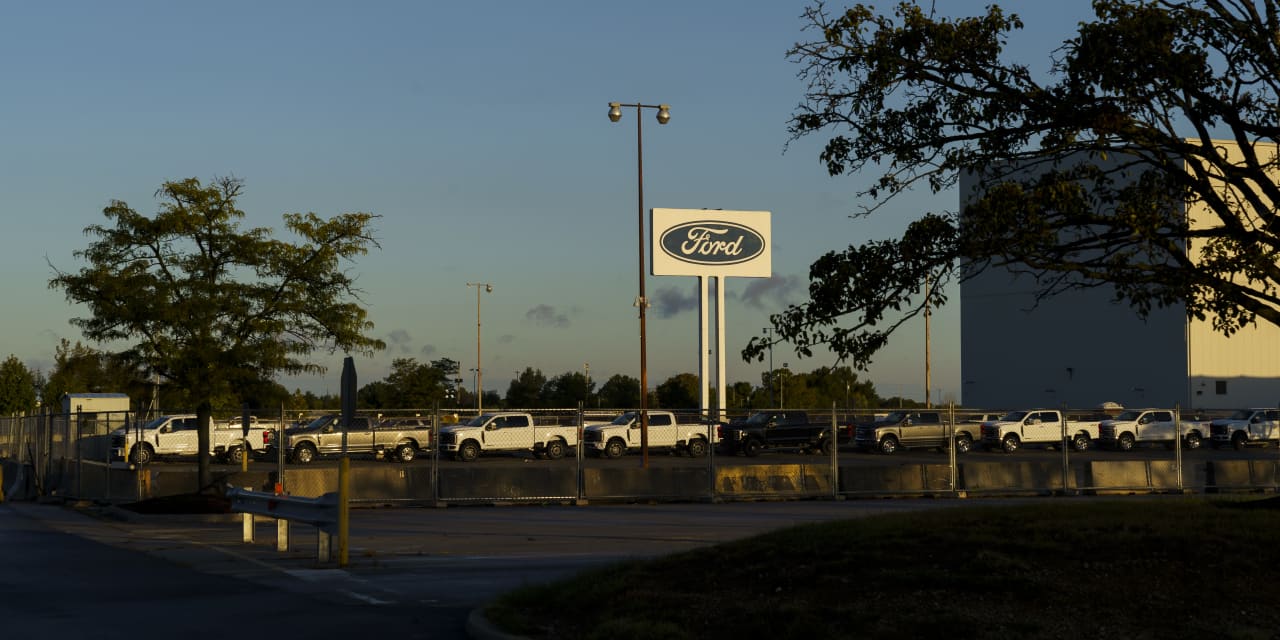The Detroit Three auto makers have labor peace for the next four-plus years. That means investors’ attention now turns back to management.
Monday, the United Auto Workers announced the ratification of new labor deals at
Ford Motor
(ticker: F), General Motors (
GM
), and
Stellantis
(STLA).
Ford, GM, and Stellantis shares were up 1%, 2.4%, and 2.4% in midday trading Monday, while the
S&P 500
and
Dow Jones Industrial Average
rose about 0.5% and 0.3%, respectively. But since the start of July, when the UAW negotiations started to weigh on investor sentiment, Ford and GM shares had lost about 31% and 26%, respectively. Stellantis shares were up about 18%.
Stellantis is a more global company, with less of its total business in the U.S. It is also a cheaper stock, trading for less than four times its estimated 2024 earnings per share. Ford and GM shares trade for about six times and four times, respectively.
The deals run through April 2028 and include base-wage increases of roughly 25% over the life of the contracts, including an 11% bump upon ratification. The gains for workers come after years of base-wage gains that have run below inflation.
Those higher labor costs have made investors a little nervous. Management’s job now is to offset higher labor costs and keep profit margins high. Investors should expect all three management teams to detail the impact on earnings in coming years in more detail, now that the contracts are ratified.
“With negotiations now officially behind us, we will focus our full attention on executing our [strategic] plan and serving our customers by delivering the high-quality products and technologies they want and expect, especially as we prepare to launch eight all-new electric vehicles in the U.S. market in 2024,” wrote Mark Stewart, chief operating officer, Stellantis North America, in an emailed statement.
“We are pleased our team members have ratified the new agreement that rewards our employees, protects the future of the business, and allows us to continue to provide good jobs in communities across the U.S.,” said GM CEO Mary Barra in an emailed statement.
“Now, we are getting back to work as one Ford team,” said Ford in an emailed statement. “It’s also imperative that we continue to attack cost and waste throughout our operations. The reality is that this labor agreement added significant cost, and we are going to have to work very hard on productivity and efficiency to become more competitive.”
Ford management says the headwind could add almost $1,000 in costs per vehicle produced over the life of the contract. The impact in year one should be close to $200 to $300 per vehicle, Barron’s calculates.
“The members have spoken,” said UAW President Shawn Fain in a news release. “The Stand Up Strike was just the beginning. The UAW is back to setting the standard. Now, we take our strike muscle and our fighting spirit to the rest of the industries we represent, and to millions of nonunion workers ready to Stand Up and fight for a better way of life.”
Fain has committed to trying to organize nonunion auto makers operating mainly in the southern U.S. That won’t be easy.
Honda Motor
(HMC) and others have been increasing wages since the UAW reached tentative agreements with the Detroit Three.
Nonunion auto workers have gotten some benefits from the UAW without having to pay union dues.
Write to Al Root at [email protected]
Read the full article here




